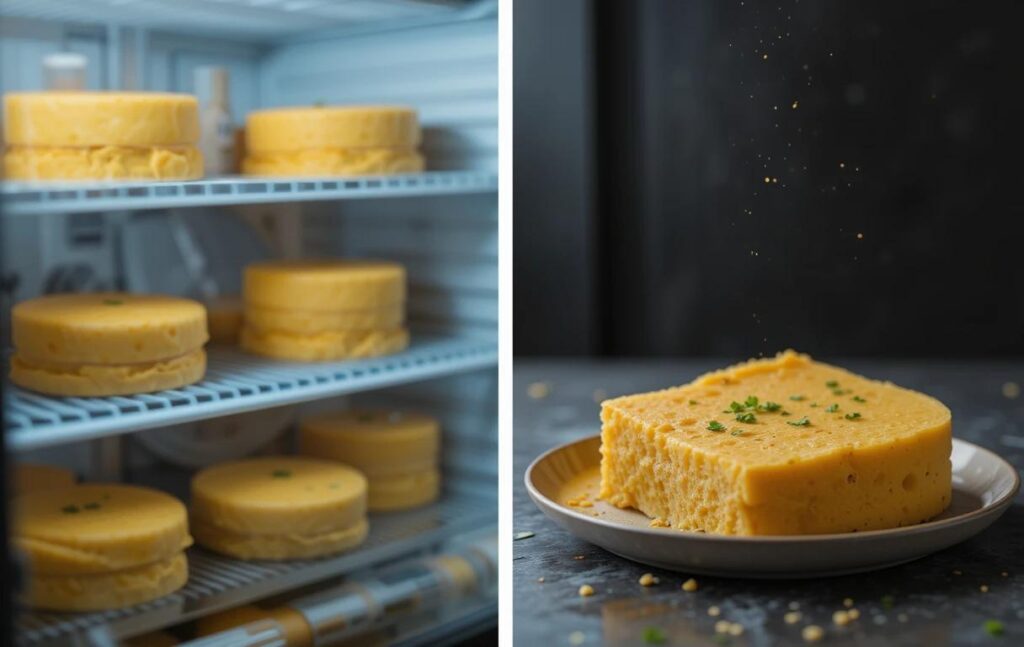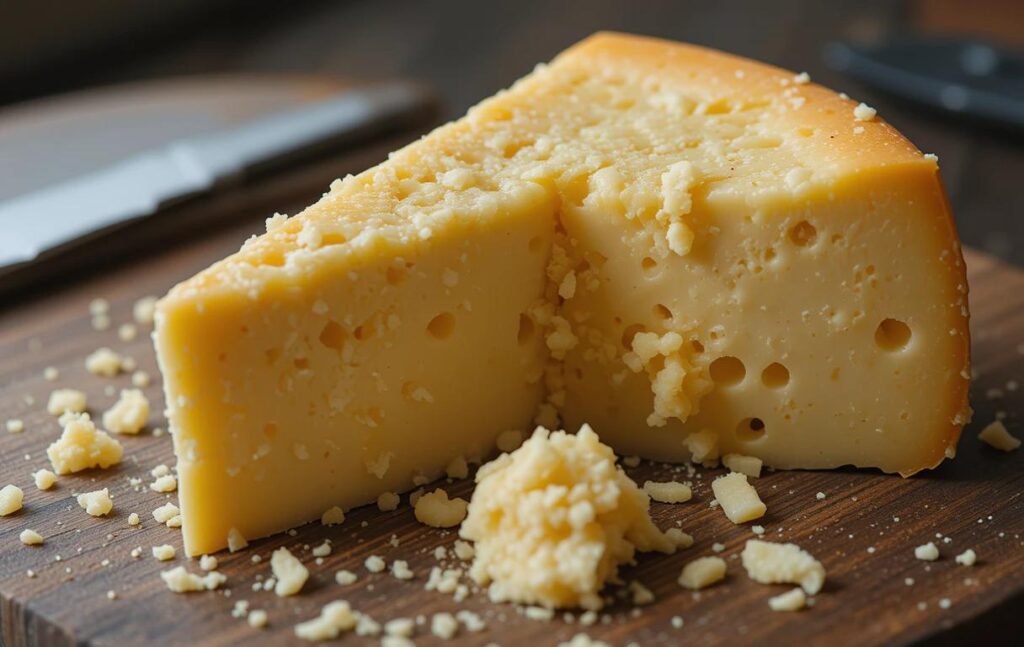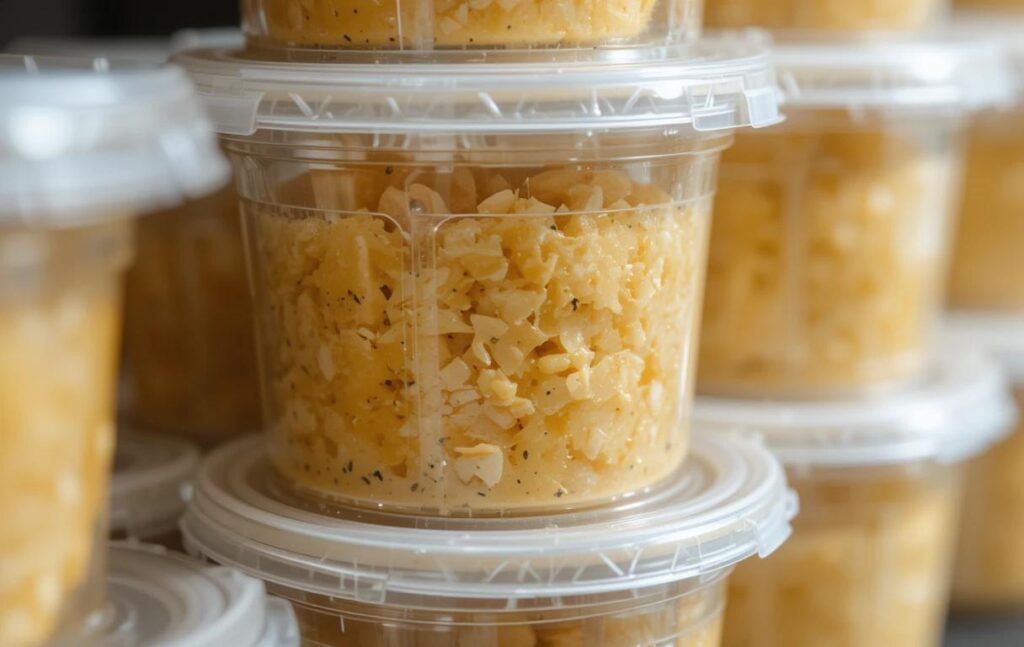How Long Is Smoked Queso Good For?
Introduction
Smoked queso has become a favorite at gatherings, backyard barbecues, and casual get-togethers. The rich blend of cheese, spices, and smoky flavor creates a dip that’s simply irresistible. But like any perishable food, smoked queso has a limited shelf life. If you’re wondering how long smoked queso is good for, proper storage is key to keeping it fresh and safe to enjoy. This guide will cover everything you need to know about its longevity, from storage methods to spotting signs of spoilage.
What Is Smoked Queso?
Smoked queso is a twist on the classic melted cheese dip, infused with a smoky aroma and flavor. It typically includes a base of Velveeta or cheddar cheese, mixed with ingredients like diced tomatoes, onions, jalapeños, and sometimes sausage or ground beef. The mixture is often prepared in a smoker, where it absorbs the wood-fired flavors that elevate its taste.
Whether served with tortilla chips, veggies, or crackers, smoked queso is a versatile snack that can be customized to suit any occasion. However, due to its dairy and protein content, it’s essential to handle and store it properly to prevent spoilage.
Factors That Affect Smoked Queso’s Shelf Life
The shelf life of smoked queso depends on several factors, including the ingredients used, storage conditions, and how it’s handled after preparation. Let’s break down these elements to understand how they influence the longevity of this popular dip.
Ingredients and Their Impact on Freshness
The ingredients in smoked queso play a significant role in how long it stays good.
- Dairy-Based Components:
- Most smoked queso recipes rely on cheeses like Velveeta, cheddar, or cream cheese. These dairy products are highly perishable and prone to spoilage when left out for extended periods.
- The high-fat content in cheese helps preserve it to some extent, but exposure to air and heat accelerates spoilage.
- Add-ins Like Meat or Vegetables:
- Ground beef, sausage, or bacon are popular additions to smoked queso, but these proteins shorten its shelf life significantly if not stored properly.
- Vegetables like tomatoes, onions, and jalapeños can release moisture, which can create an environment conducive to bacterial growth.
- Preservatives or Lack Thereof:
- Store-bought processed cheeses often contain preservatives, giving them a longer shelf life than fresh alternatives. Using fresh, organic ingredients may result in a shorter timeframe for safe consumption.
Storage Conditions: Fridge, Freezer, or Countertop?
The way you store smoked queso has the most direct impact on how long it remains safe to eat.
- Room Temperature:
Smoked queso should not be left out at room temperature for more than 2 hours. Bacteria can grow rapidly in food that stays in the “danger zone” (40°F to 140°F). - Refrigeration:
Placing smoked queso in an airtight container and refrigerating it extends its freshness for 3-4 days. Keeping it consistently cold slows bacterial growth, maintaining its safety and flavor. - Freezing:
Smoked queso can be frozen to extend its shelf life for up to 2-3 months. However, the texture and taste may change slightly after thawing, particularly if the cheese or other ingredients separate.
Handling and Hygiene
Improper handling can also shorten the shelf life of smoked queso.
- Always use clean utensils when serving or reheating the dip to avoid introducing bacteria.
- Avoid dipping directly with chips or hands, as this increases the risk of cross-contamination.
By understanding these factors, you can ensure your smoked queso remains fresh and flavorful for as long as possible.
Factors That Affect Smoked Queso’s Shelf Life

Several factors determine how long smoked queso remains fresh and safe to eat. These include the ingredients used, how it’s stored, and the conditions it’s exposed to after cooking. Understanding these factors will help you maximize the longevity of your delicious dip.
Ingredients and Their Impact on Freshness
The primary components of smoked queso—cheese, dairy, and proteins—play a significant role in its shelf life:
- Cheese: Hard cheeses like cheddar are more stable than processed cheese like Velveeta, which can spoil faster once exposed to air and heat.
- Dairy Additions: If your queso recipe includes milk or cream, it can shorten the shelf life since dairy is prone to bacterial growth.
- Meats: Sausage, ground beef, or bacon add flavor but can spoil quickly, especially if not stored at the right temperature.
- Fresh Ingredients: Items like diced tomatoes, onions, and jalapeños introduce moisture, which can lead to faster spoilage.
Storage Conditions: Fridge, Freezer, or Countertop?
The environment where you store smoked queso has a direct impact on its freshness:
- Countertop: Smoked queso left at room temperature should be consumed within 2 hours. After this, the risk of bacterial growth increases significantly, making it unsafe to eat.
- Refrigeration: Properly stored in an airtight container, smoked queso can last 3–4 days in the refrigerator. Keeping the temperature at or below 40°F (4°C) slows bacterial growth.
- Freezer: Freezing smoked queso can extend its life to 2–3 months. While freezing doesn’t kill bacteria, it halts its growth and preserves the dip’s quality for longer periods.
Temperature Fluctuations
Queso exposed to fluctuating temperatures, such as reheating and re-cooling multiple times, is more likely to spoil. Once reheated, consume it promptly and avoid repeated cooling cycles to maintain its texture and safety.
How Long Does Smoked Queso Last in the Fridge?
Refrigeration is the most common way to store smoked queso, as it preserves both its flavor and safety for a few days. However, it’s important to follow best practices to ensure that your queso stays fresh and safe to consume.
Average Shelf Life in the Fridge
Smoked queso stored in an airtight container in the refrigerator will typically last 3–4 days. This timeframe ensures the dip remains fresh and minimizes the risk of spoilage. After this period, the quality begins to decline, and the risk of bacterial contamination increases.
Proper Storage Tips
- Use Airtight Containers:
Transfer the queso to a clean, airtight container immediately after cooling. This prevents exposure to air and contaminants that can accelerate spoilage. - Label and Date:
Write the storage date on the container so you can track when it needs to be consumed. - Avoid Contaminated Utensils:
When serving, use a clean utensil each time to prevent introducing bacteria into the queso. - Store Below 40°F (4°C):
Ensure your refrigerator is set to the proper temperature to inhibit bacterial growth.
Signs Your Smoked Queso Has Gone Bad
Even with proper storage, smoked queso can spoil. Look for these warning signs:
- Smell: A sour, rancid, or off smell is a clear indication that the queso has spoiled.
- Appearance: Visible mold or discoloration (e.g., green or white patches) means it’s time to toss it out.
- Texture: If the queso separates excessively, feels slimy, or has an unusual texture, it’s no longer safe to eat.
- Taste: A bitter or off taste is another sign of spoilage. When in doubt, discard it.
What About Leftovers?
If you plan to reheat smoked queso, do so only once and heat it thoroughly to an internal temperature of 165°F (74°C). Leftovers that have been reheated multiple times are more susceptible to bacteria.
Can Smoked Queso Be Frozen?
Freezing smoked queso is an excellent way to extend its shelf life while preserving its flavor and texture. However, queso’s dairy-rich composition can make it tricky to freeze and reheat properly without affecting its creamy consistency. With the right techniques, you can enjoy your smoked queso even months later!
Pros and Cons of Freezing Smoked Queso
Pros:
- Extends shelf life to 2–3 months.
- Preserves smoky flavor and freshness.
- Convenient for meal prep or storing leftovers.
Cons:
- Dairy ingredients can separate when thawed, affecting texture.
- Reheating may require extra effort to restore creaminess.
- Some fresh ingredients (like tomatoes or jalapeños) may become mushy after freezing.
Best Practices for Freezing Smoked Queso
To ensure your smoked queso freezes well and maintains its quality, follow these steps:
- Cool Completely Before Freezing:
Let the queso cool to room temperature before transferring it to the freezer. Freezing hot queso can lead to condensation, which causes ice crystals to form and affects texture. - Portion for Convenience:
Divide the queso into smaller portions. This allows you to defrost only what you need and prevents unnecessary waste. - Use Freezer-Safe Containers:
Opt for airtight, freezer-safe containers or heavy-duty freezer bags. Leave a small amount of headspace to allow for expansion during freezing. - Wrap Tightly:
For extra protection against freezer burn, wrap the container in plastic wrap or aluminum foil. - Label and Date:
Clearly mark the container with the contents and the freezing date. Smoked queso is best consumed within 2–3 months for optimal flavor and texture.
Thawing and Reheating Frozen Smoked Queso
When it’s time to enjoy your frozen queso, follow these steps for thawing and reheating:
- Thaw in the Fridge:
Move the queso from the freezer to the refrigerator and allow it to thaw overnight. Avoid thawing at room temperature, as this can promote bacterial growth. - Reheat Gently:
- Stovetop Method: Heat the queso in a saucepan over low heat, stirring constantly to prevent separation.
- Microwave Method: Reheat in short intervals (20–30 seconds), stirring between each interval to ensure even heating.
- Add a splash of milk or cream to restore creaminess if needed.
How Long Does Frozen Smoked Queso Stay Good?
While frozen smoked queso remains safe to eat for up to 3 months, its quality may decline after this period. For the best taste and texture, consume it within the recommended timeframe.
Signs Smoked Queso Has Gone Bad

No matter how well you store smoked queso, it’s essential to know the warning signs of spoilage to ensure food safety. Consuming spoiled queso can lead to foodborne illnesses, so when in doubt, it’s better to discard it. Below are the key indicators that your smoked queso is no longer safe to eat.
1. Unpleasant Smell
One of the easiest ways to tell if smoked queso has spoiled is by its smell. Fresh queso has a rich, cheesy aroma with a hint of smokiness. If it emits a sour, rancid, or otherwise unpleasant odor, it’s a clear sign that it has gone bad.
- What to Do: If the smell seems off, don’t taste it. Discard the queso immediately.
2. Mold or Discoloration
Visible signs of mold or discoloration—such as green, black, or white spots—indicate bacterial or fungal growth. Even if the mold appears on just one part of the queso, the entire batch should be thrown out because the bacteria may have spread invisibly.
- What to Do: Do not scrape off the mold and try to save the rest. For food safety, discard the entire batch.
3. Slimy or Unusual Texture
Spoiled smoked queso may develop a slimy, watery, or grainy texture. While some separation of oils is normal during storage, excessive separation or a slimy consistency indicates spoilage.
- What to Do: Stir the queso. If the texture does not return to its original smoothness or feels sticky, it’s no longer safe to eat.
4. Off Taste
If you’ve missed other signs and decide to taste your smoked queso, any bitterness or sourness is an immediate red flag. Spoiled queso loses its creamy, smoky flavor and may taste unpleasant or metallic.
- What to Do: If it doesn’t taste right, spit it out and avoid eating more.
5. Extended Storage Time
Even if your smoked queso looks, smells, and tastes fine, exceeding the recommended storage times increases the risk of bacterial contamination. Refrigerated queso should be eaten within 3–4 days, while frozen queso is best within 2–3 months.
- What to Do: Discard queso that has been stored longer than the recommended time, even if no other signs of spoilage are present.
Why It’s Important to Watch for Spoilage
Spoiled queso can harbor harmful bacteria like Listeria, Salmonella, or E. coli, which can lead to foodborne illnesses. These risks are higher with dairy-based dishes and protein-rich additives like sausage or ground beef.
Tips to Maximize Smoked Queso’s Freshness

Smoked queso is a treat you’ll want to savor as long as possible. Proper storage and handling techniques can significantly extend its shelf life while preserving its flavor and texture. Here are some practical tips to help keep your queso fresh and safe to eat.
1. Store in Airtight Containers
Using high-quality, airtight containers is one of the best ways to keep smoked queso fresh. These containers prevent air and moisture from entering, which slows spoilage and preserves the dip’s texture and flavor.
- Tip: Choose BPA-free, food-safe containers with secure seals. For added protection, use plastic wrap before sealing the lid.
2. Refrigerate Quickly
Smoked queso should be refrigerated within 2 hours of being served to prevent bacterial growth. If left out longer, the risk of contamination increases significantly.
- Tip: Divide large batches into smaller portions to cool faster before placing them in the fridge.
3. Avoid Cross-Contamination
Always use clean utensils when serving or reheating smoked queso. Avoid double-dipping, as introducing saliva or other food particles can accelerate spoilage.
- Tip: Serve queso in smaller bowls and refill as needed to minimize exposure to contaminants.
4. Reheat with Care
Reheating smoked queso properly can restore its creamy texture and smoky flavor while ensuring it’s safe to eat.
- Stovetop Method: Heat on low, stirring frequently to avoid scorching.
- Microwave Method: Warm in short intervals, stirring between each to prevent uneven heating.
- Tip: Add a small amount of milk or cream to maintain its smooth consistency during reheating.
5. Freeze Leftovers Strategically
Freezing is a great option for preserving smoked queso for longer periods. To ensure optimal results:
- Portion it out to make thawing easier.
- Store in freezer-safe bags or containers, removing as much air as possible.
- Tip: Thaw in the refrigerator and reheat gently for the best results.
6. Label Everything
When storing smoked queso in the fridge or freezer, labeling is crucial for keeping track of storage times.
- Tip: Write the date on each container with a marker or use adhesive labels to know exactly when it’s time to eat or discard.
7. Store Separately from Strong-Smelling Foods
Smoked queso can absorb odors from other items in the fridge. Keep it sealed tightly and store it away from pungent foods like onions or garlic.
- Tip: Use odor-absorbing items, like an open box of baking soda, in your fridge to maintain freshness.
8. Practice Batch-Freezing for Meal Prep
If you make smoked queso in bulk, consider freezing individual portions to enjoy later without defrosting the entire batch.
- Tip: Use silicone ice cube trays to freeze small portions, then transfer the cubes to a freezer bag for easy use.
9. Monitor Temperature Consistently
Fluctuating fridge or freezer temperatures can compromise the queso’s quality and safety. Keep your refrigerator at or below 40°F (4°C) and your freezer at 0°F (-18°C).
- Tip: Use a thermometer to check appliance temperatures regularly.
10. Keep Fresh Ingredients Separate
If your recipe includes fresh ingredients like diced tomatoes or cilantro, consider storing these separately and adding them fresh to reheated queso.
- Tip: This approach reduces the risk of spoilage and improves texture after reheating.
FAQs About Smoked Queso Storage
Smoked queso is a crowd-pleaser, but questions about its storage often arise. Below are the most frequently asked questions and detailed answers to help you enjoy this smoky delight safely and for as long as possible.
1. How Long Can Smoked Queso Sit Out?
Smoked queso should not sit out for more than 2 hours at room temperature. Beyond this timeframe, bacteria can grow rapidly, making the dip unsafe to eat.
- Tip: If serving queso at a party, keep it warm using a slow cooker or warming tray to extend its safe serving time.
2. Can You Reheat Smoked Queso Multiple Times?
It’s not recommended to reheat smoked queso more than once. Each reheating cycle can increase the risk of bacterial growth and compromise the texture and flavor.
- Solution: Reheat only the portion you plan to consume and store the rest properly for later use.
3. Can I Freeze Smoked Queso with Meat in It?
Yes, smoked queso containing meat can be frozen. However, meats like sausage or ground beef may slightly change in texture after freezing. Proper storage in airtight containers is crucial to maintaining quality.
- Tip: Ensure the queso is thoroughly cooled before freezing, and label it with the date.
4. What’s the Best Way to Keep Smoked Queso Warm for a Party?
To keep smoked queso warm and melty during a party, use:
- A Slow Cooker: Set it on low to maintain a consistent temperature.
- Chafing Dishes: Perfect for buffet-style settings.
- Tip: Stir occasionally to prevent the queso from developing a crust or scorching at the edges.
5. Can I Store Smoked Queso in the Same Pan I Cooked It In?
Yes, but only if the pan is suitable for storage (e.g., a cast iron skillet with a lid). However, it’s better to transfer queso to an airtight container to reduce exposure to air and moisture.
- Tip: If storing in the same pan, cover tightly with plastic wrap or foil and refrigerate promptly.
6. Is It Safe to Eat Smoked Queso That’s Been Left Out Overnight?
No, smoked queso left out overnight is not safe to eat. The extended exposure to room temperature allows bacteria to multiply, even if it looks and smells fine.
- Tip: Discard queso that’s been left out for more than 2 hours to avoid foodborne illnesses.
7. How Can I Restore Creaminess After Reheating Smoked Queso?
Reheated queso may lose some of its creamy texture, but you can fix this by adding a splash of milk, cream, or broth while stirring. This helps blend any separation and restores smoothness.
- Tip: Heat gently and stir frequently for the best results.
8. Can I Add Fresh Ingredients to Leftover Smoked Queso?
Yes, fresh ingredients like diced tomatoes, cilantro, or extra cheese can be added to leftovers to enhance flavor. However, these additions should be consumed immediately and not stored again.
- Tip: Always refrigerate leftovers promptly if fresh ingredients are added.
9. How Do I Know If My Smoked Queso Is Safe to Freeze?
Smoked queso is safe to freeze if it has been cooled quickly after cooking and stored in airtight, freezer-safe containers. Avoid freezing queso that’s been sitting out for extended periods.
- Tip: Portion it into small servings to make thawing and reheating more convenient.
10. What’s the Best Way to Reheat Frozen Smoked Queso?
The best way to reheat frozen smoked queso is to thaw it overnight in the refrigerator, then warm it on the stovetop or in the microwave with frequent stirring.
- Tip: Add a bit of milk or cream during reheating to restore creaminess and texture.
Conclusion: Enjoy Smoked Queso Safely and Freshly
Smoked queso is a delicious addition to any gathering, but its shelf life is limited due to its dairy-rich ingredients and perishable nature. To keep your smoked queso safe and flavorful, follow proper storage practices, like refrigerating it within 2 hours, using airtight containers, and consuming it within 3–4 days. For longer storage, freezing is a great option, allowing you to enjoy your smoky creation up to 2–3 months later.
Understanding the factors that affect its freshness, such as temperature and ingredient quality, helps you avoid spoilage while getting the most out of this crowd-pleaser. When reheating, take care to restore its creamy texture and smoky flavor, ensuring that every bite is as delicious as the first.
By following these tips and best practices, you can confidently savor smoked queso without worrying about waste or safety. So, next time you whip up a batch, store it right and enjoy it to the fullest!
Best White Queso
Related Recipes
- “Tuna Tomato Sauce Pasta Recipe“: A tomato-based recipe showcasing another way to use tomatoes.
- “Baked Chicken Fettuccine Alfredo with Broccoli“: Another comforting dish that can be complemented with tomato-based sauces.
Ingredient-Focused Content
- “Lions Mane Mushroom Recipe“: Suggest using a tomato gravy as a flavorful addition for plant-based dishes.
Cooking Techniques and Enhancements
- “Mango Habanero Salsa“: Explore complementary uses of sauces and gravies for flavor diversity.
Storage and Reuse Tips
- “Sous Vide Recipes“: Recommend tomato gravy as a sauce for sous vide-cooked meats or vegetables.
- “Ocean Spray Cranberry Sauce Recipe“: Guide readers on making and storing sauces, including tomato gravy.
Related Recipes
- “Tuna Tomato Sauce Pasta Recipe“: A tomato-based recipe showcasing another way to use tomatoes.
- “Baked Chicken Fettuccine Alfredo with Broccoli“: Another comforting dish that can be complemented with tomato-based sauces.
Ingredient-Focused Content
- “Lions Mane Mushroom Recipe“: Suggest using a tomato gravy as a flavorful addition for plant-based dishes.
Cooking Techniques and Enhancements
- “Mango Habanero Salsa“: Explore complementary uses of sauces and gravies for flavor diversity.
Storage and Reuse Tips
- “Sous Vide Recipes“: Recommend tomato gravy as a sauce for sous vide-cooked meats or vegetables.
- “Ocean Spray Cranberry Sauce Recipe“: Guide readers on making and storing sauces, including tomato gravy.
Related Recipes
- “Tuna Tomato Sauce Pasta Recipe“: A tomato-based recipe showcasing another way to use tomatoes.
- “Baked Chicken Fettuccine Alfredo with Broccoli“: Another comforting dish that can be complemented with tomato-based sauces.
Ingredient-Focused Content
- “Lions Mane Mushroom Recipe“: Suggest using a tomato gravy as a flavorful addition for plant-based dishes.
Cooking Techniques and Enhancements
- “Mango Habanero Salsa“: Explore complementary uses of sauces and gravies for flavor diversity.
Storage and Reuse Tips
- “Sous Vide Recipes“: Recommend tomato gravy as a sauce for sous vide-cooked meats or vegetables.
- “Ocean Spray Cranberry Sauce Recipe“: Guide readers on making and storing sauces, including tomato gravy.

